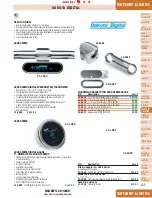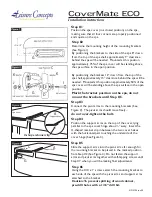
-2-
598-1000-07
4. Test range. Temporarily position chime and push but-
ton where you want it mounted. Press push button to
verify chime and push button work properly. If chime
does not sound, see Troubleshooting.
5. Adjust volume control. Adjust volume control to
desired volume (see Figure 3).
6. Mount push button. Use either screws or double
sided tape to mount push button.
•
Screw Mounting: To mount with screws, remove
back of case by pushing in tab on bottom with a
small screwdriver (see Figure 1). Note: Remove
material in screw holes (if needed) before mounting
with screws. Attach back of case to door jamb or wall
(see Figure 4). Snap front of push button on.
•
Tape Mounting:
When attaching push button using double sided tape,
make sure the surface of the door jamb or wall is clean.
7. Mount chime. Determine mounting location.
The chime base can be mounted in two different ways. The base can be mounted
using one keyhole and one mounting hole or two mounting holes. The base
may be mounted horizontally or vertically depending upon the specific model
purchased.
Keyhole Mounting:
• Remove batteries from chime.
• Drill one 7/32" diameter pilot hole for keyhole wall anchor and insert anchor.
Note:
Keyhole slot is located about 1" (25 mm) from top of chime.
• Mount keyhole screw to wall leaving about 1/8" (3 mm) of the screw threads
exposed (see Figure 5).
• Using keyhole on back of chime base, hang base on screw.
• Level chime base.
• Using the horizontal slot located in the bottom of the battery compartment,
mark location for second screw.
• Drill one 7/32" diameter pilot hole for wall anchor and insert anchor.
• Insert second screw through the horizontal slot and attach to wall.
• Verify chime is level and tighten screws securely.
• Replace batteries (see Figure 3).
• Snap cover onto chime as shown in Figure 7.
Figure 4



































